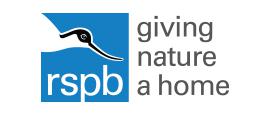RSPB: My First Book of Garden Birds-Identifying and naming animals
My First Book of Garden Birds is a non-fiction text it can be enjoyed in a similar way to a story. That is because each bird is presented with some descriptive clues, a picture which only shows part of the bird and an invitation to guess which bird is being described. The page is then turned to reveal the bird's name, a full picture and a further description. This book could certainly spark a life-long interest in bird watching. It would also help to meet the objective to identify and name a variety of common birds.
Other non-fiction books which might support children to name and recognise fish, amphibians, birds, mammals (and invertebrates) include the Nature Detectives Series (published by Wayland) including British Mammals, British Birds and British insects. These are clearly illustrated with photographs which makes identification of the animals relatively straightforward.
Another useful resource are the Usborne spotter’s cards ‘100 Things to spot in your garden’. These are especially useful as the cards can rearraanged and used for sorting activities and to support children to work scientifically by 'grouping and classifying'.
All Kinds of Nests by Eun-Gyu Choi is another book which children may enjoy. It looks at how birds make different kinds of nests depending on where and how they live, providing a lovely way to find out about different birds.
Big Schools' Birdwatch legacy counting sheets
These sheets can be used to record what birds are seen while watching the birds on a bird feeder. They are designed to be used for the Big School Bird Watch which is held each January http://bit.ly/2hpIvaM . However, they could be used at any time of year.
Bird Watching in Schools
This teachers TV clip shows KS1 children taking part in the Big Schools Birdwatch survey. It gives lots of ideas about how this can be managed in school, even if they do not have access to a playing field. It shows how children can be supported to learn the names of the birds which live in their locality.
It also suggests ways of linking this activity to other areas of the curriculum such as DT (making masks and bird cake) and English (poetry writing).
Education Pack: Minibeasts - Invertebrate Survey
Children need to be able to identify more than one type of animal in their local environment. This resource gives support to teachers and children to find and identfy invertebrates.
Children could work together to make a book based upon the minibeasts that they find which is written in the style of the RSPB bird book. It could be called 'My first book of Garden Mini-beasts' and have a page of identifying clues followed by the name, a more detailed illustration and more information about the creature. It could be illustrated with a mixture of photographs taken by the children and their drawings.
Outdoor Adventure Kit
Children will be much more enthusiastic to find out about the natural world if they have the correct equipment! Here is a description of how to build an exciting and motivating outside exploration kit!



